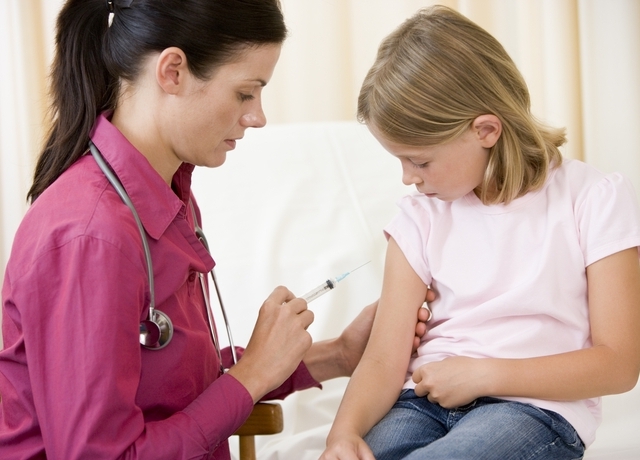 Erwin Wodicka/PhotoSpin
Erwin Wodicka/PhotoSpin
Canada’s Capital Region in and around Ottawa, Ontario, and Fraser Valley in British Columbia have both experienced recent occurrences or outbreaks of the measles (also known as rubeola or red measles) virus among college and primary students.
Measles was once considered a common disease, but can have some serious complications for all age groups.
Facts about Measles
“Measles occurs throughout the world and remains a serious and common disease in developing countries. According to the World Health Organization, measles is a leading cause of vaccine preventable deaths in children worldwide ... Measles was eliminated in the WHO Region of the Americas in 2002 ... Since that time, there have been small numbers of imported and import-related cases in the Americas ... However, in 2011, this region [the Americas] had reported the highest number of measles cases since the virus was eliminated.” (2)
Measles is a respiratory disease since the measles virus grows in the cells lining the back of the throat and lungs. (3)
Signs and Symptoms of Measles
According to the Mayo Clinic & WebMD, signs and symptoms of measles include:
• Fever (mild to start, but up to 104 with the onset of rash)
• Dry cough
• Runny nose
• Sore throat
• Swollen lymphnodes
• Inflamed eyes (conjunctivitis)
• Light sensitivity
• Tiny white spots with bluish-white center inside the mouth on the inner lining of the cheek (Koplik’s spots)
• A skin rash that starts at the hairline and progresses down the rest of the body
Transmission of the virus occurs when a person comes in contact with saliva from someone with measles, or with an infected person who sneezes, breathes or coughs.
The incubation period for the virus, after exposure, is 8-12 days before the first symptoms of mild fever, dry cough, runny nose, and sore throat appear. Transmission usually happens before an infected person even knows he/she has the disease and may just assume he or she has a cold.
A person is contagious for four days before the rash appears and for four days after the rash appears. The only way to prevent the spread of the disease is isolation.
Complications Associated with Measles
Most people get better within two weeks. But measles can sometimes cause other problems, such as:
• Ear infection (1 in 10 children)
• Pneumonia (1 in 20)
• Bronchitis, laryngitis, croup
• Swelling of the Brain (encephalitis – 1 in 1,000)
• Pregnancy loss, preterm labor or low-birth weight babies
• Low platelet count (decreased ability for blood to clot)
• Diarrhea
• Chronic disability
• Seizures are rare but can occur (3,4,5)
“In developed countries 2 to 3 cases per 1,000 result in death.” (2)
“In developing countries, where malnutrition and vitamin A deficiency are common, measles has been known to kill as many as one out of four people. It is the leading cause of blindness among African children. It is estimated that in 2008 there were 164,000 measles deaths worldwide.” Clearly this is not just a harmless childhood disease. (3)
Most of the cases in the Americas are caused by people coming from Europe or other countries where the disease is quite common and where vaccination is not available.
The only way to be sure you and your child/children are protected is to have the MMR vaccine (measles, mumps, rubella). A pregnant woman cannot get the vaccine, but can have a shot of immunoglobins if she is at risk. (1)
Children under the age of 12 months, and children and adults with low immunity issues also cannot have the vaccine, so it’s important that everyone who can, does receive their vaccination.
Sources:
1. B.C. measles outbreak: which adults should get vaccinated? CBC News. Web. Accessed: Mar 19, 2014.
http://www.cbc.ca/news/canada/british-columbia/b-c-measles-outbreak-which-adults-should-get-vaccinated-1.2576467
2. Measles. Public Health Agency of Canada. Web. Accessed: Mar 19, 2014.
http://www.phac-aspc.gc.ca/im/vpd-mev/measles-rougeole-eng.php
3. Measles (Rubeola). Centers for Disease Control and Prevention. Web. Accessed: Mar 19, 2014.
http://www.cdc.gov/measles/about/index.html
4. Measles. Mayo Clinic. Web. Accessed: Mar 19, 2014
http://www.mayoclinic.org/diseases-conditions/measles/basics/symptoms/con-20019675
Reviewed March 20, 2014
by Michele Blacksberg RN
Edited by Jody Smith






Add a CommentComments
There are no comments yet. Be the first one and get the conversation started!